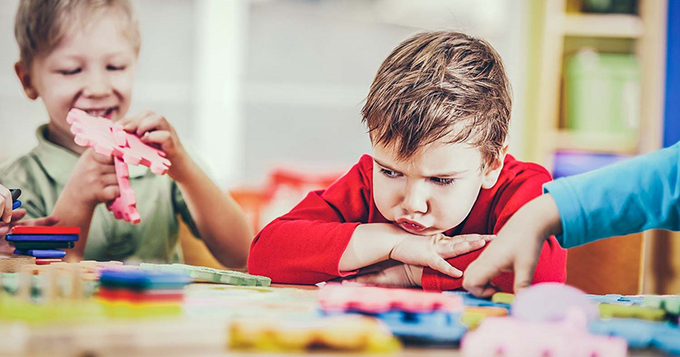
Multiple advances in various fields, especially in the neurosciences, have greatly expanded our understanding of emotions. But, despite this, in our culture we still tend to distinguish between two sides of the same coin: on one side is reason, knowledge, serenity, goodness… and on the opposite side are passions, error, debauchery, evil. Aristotle already told us that “educating the mind without educating the heart is not educating at all”.
In general, the current trend is to recognize that emotion and reason are part of the same “brain architecture” oriented towards life in groups or in relationships. That is why there are those who speak of emotional skills or competences as essentially “participatory” skills, although the most common is to speak of “socio-emotional” skills. Because human beings were born to relate to each other, and knowing the language of emotions, knowing how to speak and read it, is a fundamental capacity for it.
Benefits and contagion
Numerous empirical studies have shown that a harmonious socio-emotional development brings benefits in the medium and long term, regardless of the person’s gender. These benefits include academic and work success, the ability to relate constructively with other people, adapt to changes and overcome obstacles, etc.
On the other hand, research has also highlighted that the socioemotional health of children is closely linked to the greater or lesser socioemotional well-being of their parents, families and communities. For this reason, socio-emotional skills are something that, in principle, are promoted more by “contagion” than through systematic teaching. Empathic parents usually produce empathic children.
Experts on the subject have distinguished various components within socio-emotional learning:
- Know and love yourself.
- Sensitivity towards oneself and towards others.
- The self-regulation of behavior.
- Responsible decision making.
- The management of interpersonal relationships.
Likewise, they have devised multiple activities or educational techniques that can contribute to adequate development in all these specific areas, and that can compensate for the socio-emotional deficits that may be affecting children affected by economic, social and family difficulties.
An educational goal outside the family
For all these reasons, it is currently understood that the promotion of socio-emotional development should not be limited to the family environment or conceived as an extra subject, worthy of a few hours a week.
Increasingly, health and socioemotional maturity are seen as priority goals in educational centers. Because, no matter how much knowledge children have, if they do not know how to control or manage their emotions they will not be able to develop as people.
What does it mean to control or manage emotions?
Teaching them to control and manage their emotions implies, first of all, teaching them to know themselves, to learn to feel and understand where and when their emotions arise.
But, without a doubt, the greatest learning comes from the example, from the role models that we adults offer, mainly parents or members of their family. Because most of the time, children do not do what adults say, but what they see them do.
For example, when adults remain calm we are teaching them the correct attitude; but when children get angry, you have to tell them that they are not bad people, but that they are expressing their discomfort, which can be pain, sadness, fear…
Children’s emotional self-control depends, then, on how fathers and mothers express their emotions, how they teach them to interpret the emotions of others, to postpone gratifications if they perform a positive behavior. Above all, we should not reward tantrums: letting them manage them is the way for them to learn to solve their problems. We must also teach them to think positive, to be assertive and empathic.
Managing is not hiding or repressing
But not only what we adults do has an influence on what they do. Another issue to take into account is what we tell them through our verbal and non-verbal language.
For example, when a child cries, it is not positive to tell him not to. Crying is a form of communication, and maybe at that moment it is what he needs. It is better to use empathetic phrases that validate their emotions and serve them as support; of course, never embarrass or ridicule them.
Nor is it necessary to repress, but to help the child become aware of what is happening to him, how he is feeling so that he understands it and can express it to the adult, can put words to his feelings.
Keep in mind that the most important thing is that adults, parents, have positive emotional management. Without it the situation becomes complicated. Good emotional management of parents entails good emotional management of children.
Everything is information
For traditional perspectives, the reason was the “signal” or the message, and the emotional or affective were simply “noise”, static, background disturbances without which communication would go better.
Now we know that this is not the case, that emotions are also a signal, even if they come through another channel or with other codes, and that stimulating emotional intelligence translates into greater health and optimal psychological development.
Emotions are present in every moment of our daily life. Knowing how to manage and control them facilitates, without a doubt, the relationship with others and with ourselves.
Author Bio: Maria Rosa Buxarrais Estrada is a University Professor, at the Faculty of Education. Area: Theory and History of Education at the University of Barcelona
